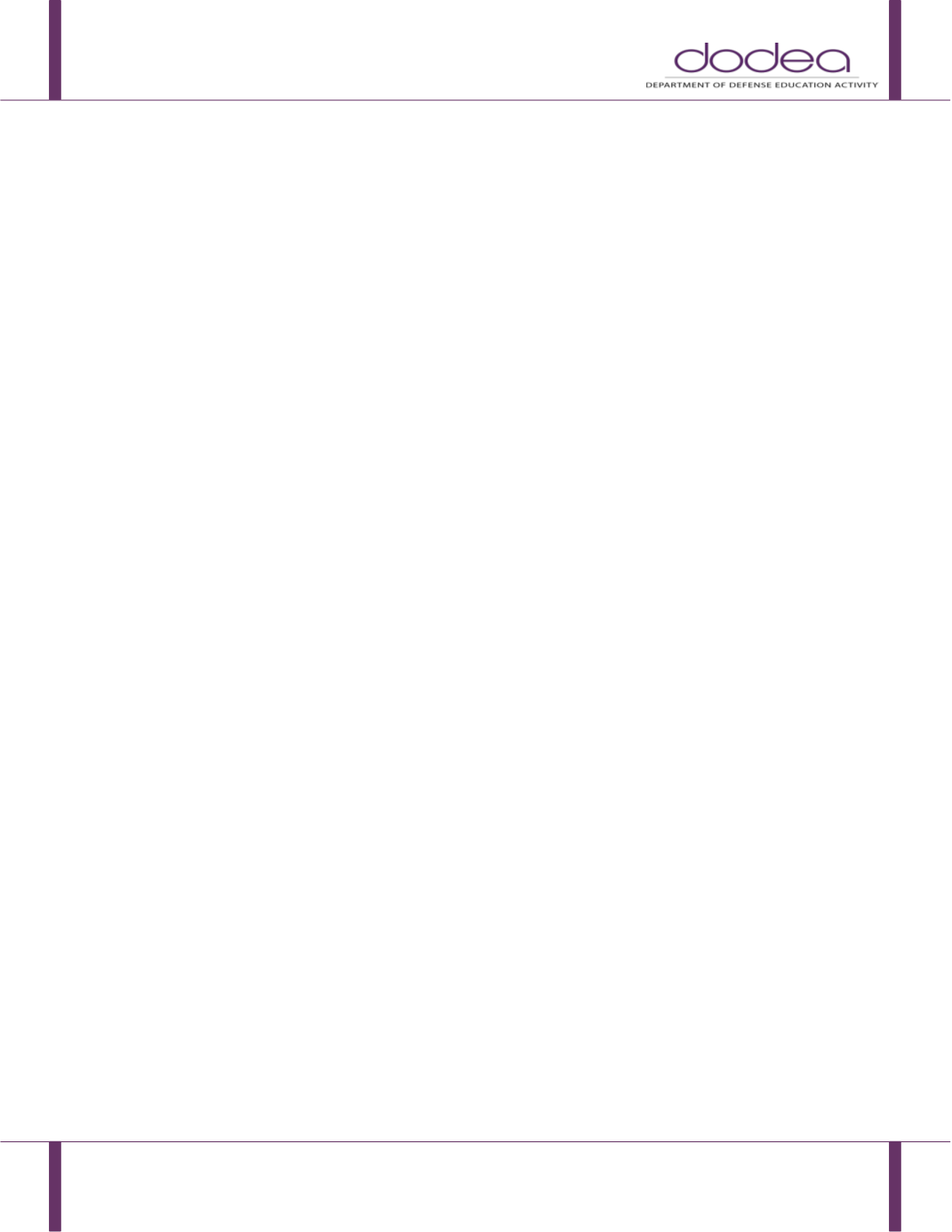

1342.12 Companion
July 12, 2017
Page 188
Speech-language pathology services or any other related service, if the service is considered special
education rather than a related service under state standards;
Vocational education; and
Travel training.
“Special education hearing officer”
has the same meaning as the term “impartial hearing officer”.
“Specially designed instruction” means adapting, as appropriate to the needs of an eligible student the
content, methodology, or delivery of instruction: 1. To address the unique needs of the student that
result from the student’s disability; and 2. To ensure access of the student to the general curriculum, so
that the student can meet the educational standards that apply to all students within DoDEA.
“Specific learning disability”
(SLD) means a disorder in one or more of the basic psychological processes
involved in understanding or in using spoken or written language that may manifest itself as an
imperfect ability to listen, think, speak, read, write, spell, remember, or do mathematical calculations.
This term includes such conditions as, recognizing that they may have been otherwise labeled with
terms such as perceptual disabilities, brain injury, minimal brain dysfunction, dyslexia, and
developmental aphasia. This term does not include learning problems that are primarily the result of
visual, hearing, or motor disabilities; intellectual disability; emotional disturbance; or environmental,
cultural, or economic differences.
“Speech-language Impairment”
(SLI) means:
1)
Communication disorder is characterized by stuttering, impaired articulation, voice impairment,
or a disorder in the receptive or expressive areas of language that adversely affects a student’s
educational performance.
2)
Articulation disorder is characterized by substitutions, distortions, and/or omissions of
phonemes that are not commensurate with expected developmental age norms, that are not
the result of limited English proficiency or dialect difference, and that may cause unintelligible
conversational speech.
3)
Fluency disorder is characterized by atypical rate, rhythm, repetitions, and/or secondary
behaviors that interfere with communication are inconsistent with age or development.
4)
Language and phonological disorders are characterized by an impairment or delay in receptive
or expressive language, including semantics, morphology and syntax, phonology, or pragmatics.
This impairment does not include students whose language problems are due to English being
their second language or dialect differences.
5)
Voice disorder is characterized by abnormal pitch, intensity, resonance, duration, or quality
inappropriate for chronological age or gender.
“Supplementary aids and services”
means aids, services, and other supports that are provided in
general education classes or other education-related settings to enable students with disabilities to be
educated with students without disabilities to the maximum extent appropriate.
“Transition services”
if used with reference to secondary transition means a coordinated set of activities
for a student with a disability that is designed within a results-oriented process that: 1. Is focused on
improving the academic and functional achievement of the student with a disability to facilitate the
student’s movement from school to post-school activities, including postsecondary education,
vocational education, integrated employment (including supported employment), continuing and adult


















